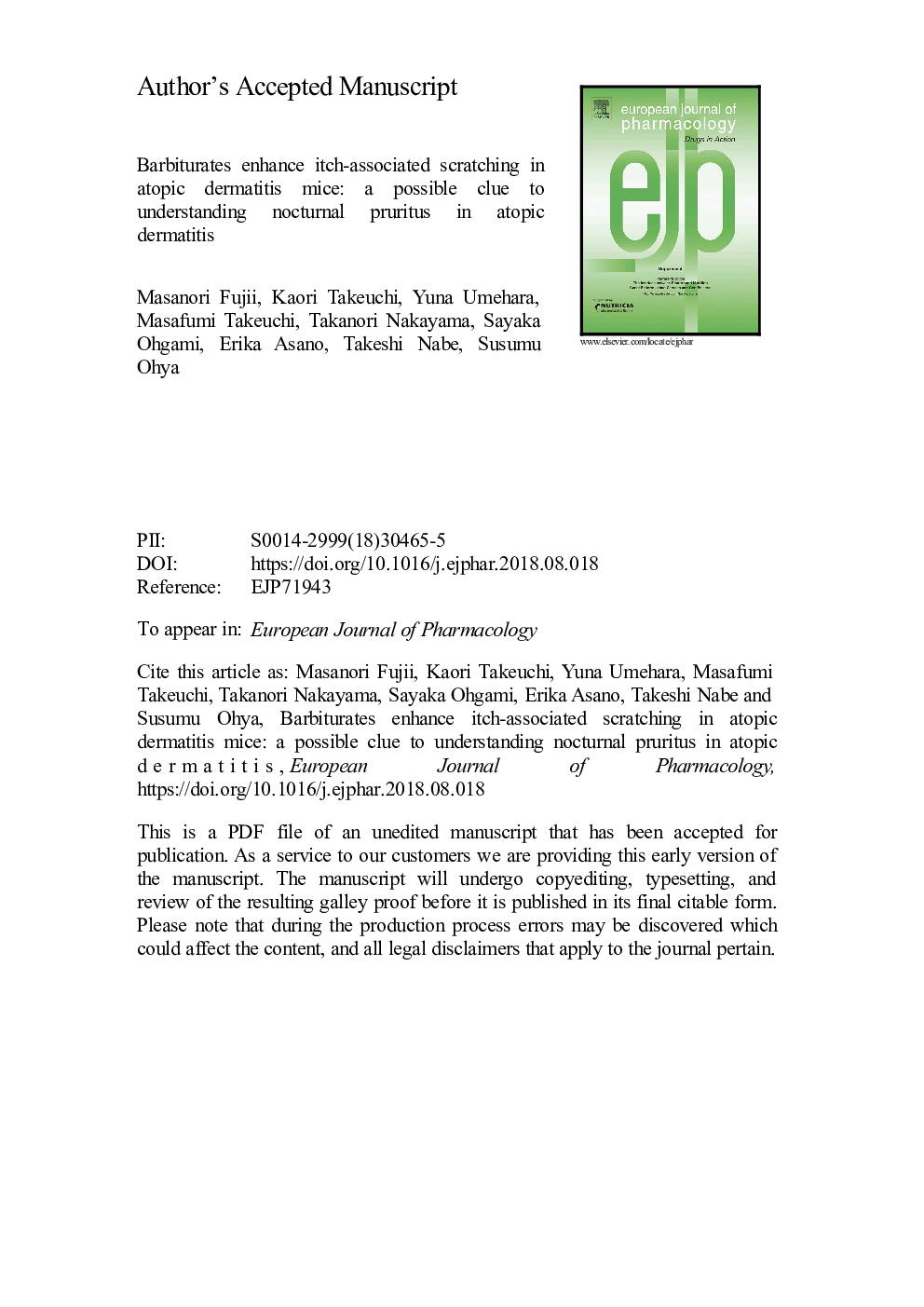| Article ID | Journal | Published Year | Pages | File Type |
|---|---|---|---|---|
| 8944005 | European Journal of Pharmacology | 2018 | 35 Pages |
Abstract
In chronic pruritic diseases such as atopic dermatitis, pruritus is exacerbated during nocturnal sleep; however, the underlying mechanism remains unclear. We previously demonstrated that acute administration of the sedative-hypnotics ethanol markedly enhanced itch-associated spontaneous scratching in a diet-induced mouse model of atopic dermatitis. In the present study, to expand our previous finding and provide a general mechanism for the central modulation of chronic itch, we examined whether other hypnotic drugs, such as barbiturates and benzodiazepines, also enhance scratching, and further investigated the underlying mechanism. Barbiturates markedly enhanced spontaneous scratching in the atopic dermatitis model but not controls. However, unexpectedly, benzodiazepines only slightly increased scratching, and the selective γ-aminobutyric acid type A (GABAA) receptor agonist, muscimol, had no effect. Local injection studies have demonstrated that barbiturates act at the supraspinal level to enhance scratching. Barbiturate-induced scratching was inhibited not only by GABAA receptor antagonists but also by an L-type voltage-dependent calcium channel (L-VDCC) agonist and an α-amino-3-hydroxy-5-methyl-4-isoxazolepropionic acid (AMPA) glutamate receptor agonist. An intracisternally injected AMPA receptor antagonist alone or in combination with an L-VDCC antagonist sufficiently enhanced scratching. Barbiturate-induced scratching enhancement was observed in another atopic dermatitis model, NC/Nga, but not in histamine-induced acute itch model in normal healthy mice. Overall, our results suggest that a synergistic effect among AMPA receptor inhibition, GABAA receptor activation, and L-VDCC inhibition in the brain mediates barbiturate-induced scratching in atopic dermatitis mice. This observation may provide a novel clue to understanding a supraspinal itch mechanism in chronic diseases such as atopic dermatitis.
Related Topics
Life Sciences
Neuroscience
Cellular and Molecular Neuroscience
Authors
Masanori Fujii, Kaori Takeuchi, Yuna Umehara, Masafumi Takeuchi, Takanori Nakayama, Sayaka Ohgami, Erika Asano, Takeshi Nabe, Susumu Ohya,
